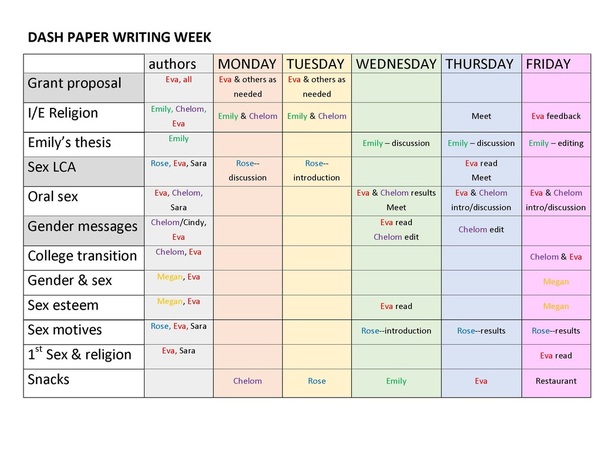1. Hurray!
2. This is all totally doable. And reasonable.
3. Hmmm… some of this may not be all that reasonable.
4. Hmmm… some of this may not be all that doable.
5. [insert inappropriate language here]
6. We did it. Hurray!
I’ve been trying to publish journal articles for more than 20 years, so I’ve received my share of R&R letters (when I’m lucky). I’ve received supportive ones, I’ve received neutral ones, and I’ve received ones that felt unnecessarily harsh. Here is one that felt really harsh at the time – it was in a letter about the first manuscript I wrote from my dissertation, which, in retrospective, was way too long – but also was eventually published in the first journal I sent it to, Child Development.
- Include the original critiques. One of the biggest challenges of an R&R is not only revising the manuscript in response to the feedback, but also explaining every change you did (or did not) make. When your adviser or colleague gives you feedback on a thesis or paper, you don’t necessarily have to respond – certainly not in writing – to each point. But with an editor (and the reviewers who may read your letter and reread your manuscript), you have to respond to everything.
- I was originally taught that in writing a letter to the editor, I should not cut and paste from the actual letters, but instead should paraphrase the points. My mentor told me that by doing so, I didn’t have to quote feedback that was very negative, but could paraphrase and therefore soften some of it. After serving as an associate editor for Developmental Psychology, I changed my philosophy on this point, and I now do cut and paste the original language from the letter, and respond to each point. Then, the editor and reviewers do not have to go back and forth between 3 documents – their reviews, your letter, and your revised manuscript – they only have to look at the letter and the manuscript. Saving others’ time is always appreciated.
- Don’t skip any points. It seems obvious, but I’ve seen authors fail to respond point-by-point far too often. If an editor or reviewer raises a point, you have to address it one way or another. To ignore it is to really annoy him/her, and that’s not in your best interest.
- Be polite. Sometimes you will be really frustrated with editors or reviewers. Sometimes you will really disagree with them. It absolutely does not benefit you to express any of that frustration. Whatever you say, say it in a polite way. I know that there’s variability in the extent to which authors state things such as “this point was a really valuable one.” Some authors use these types of phrases frequently, others cut right to the chase (“we have addressed this issue on p. XX by adding…”). Whichever style you choose, be polite. And, if you do think the reviewer made a good point, be sure to say so.
- Save your “get out of jail free” card. Another term I borrowed from Steve Zarit. There are usually going to be a couple of points that a reviewer made that you strongly disagree with, and thus plan to argue against in your letter. Try to minimize the number of such points, and maximize points in which you do take the editor’s/reviewers’ advice. I have at times changed something that I preferred the way I originally had it, so that I could hold firm on another point. As they say in parenting, choose your battles. I have rerun all of my analyses and rewritten all of my tables, dropping 2 (out of 700) participants because of a characteristic that a reviewer thought could bias my results.
Although I often groan during the revision process, I usually genuinely believe that the final product after responding to reviews is better than what I initially submitted. That is, I generally have faith in the process.
What if your paper was rejected? The bad news is, your paper was rejected, and you have to start over with a new journal. The good news is, you have a “free” set of reviews, can address concerns you agree with, and can totally ignore what you don’t agree with, before sending it to a new journal.
Just don’t ignore every point, or obvious ones. I once reviewed a paper and provided relatively extensive feedback. Three months later, I received the identical paper to review from a different journal – and the only change was one misspelled word. So I sent the exact same review to the editor.
“The post Writing the letter to editor for your revised manuscript first appeared on Eva Lefkowitz’s blog on January 4, 2016.”




 RSS Feed
RSS Feed
